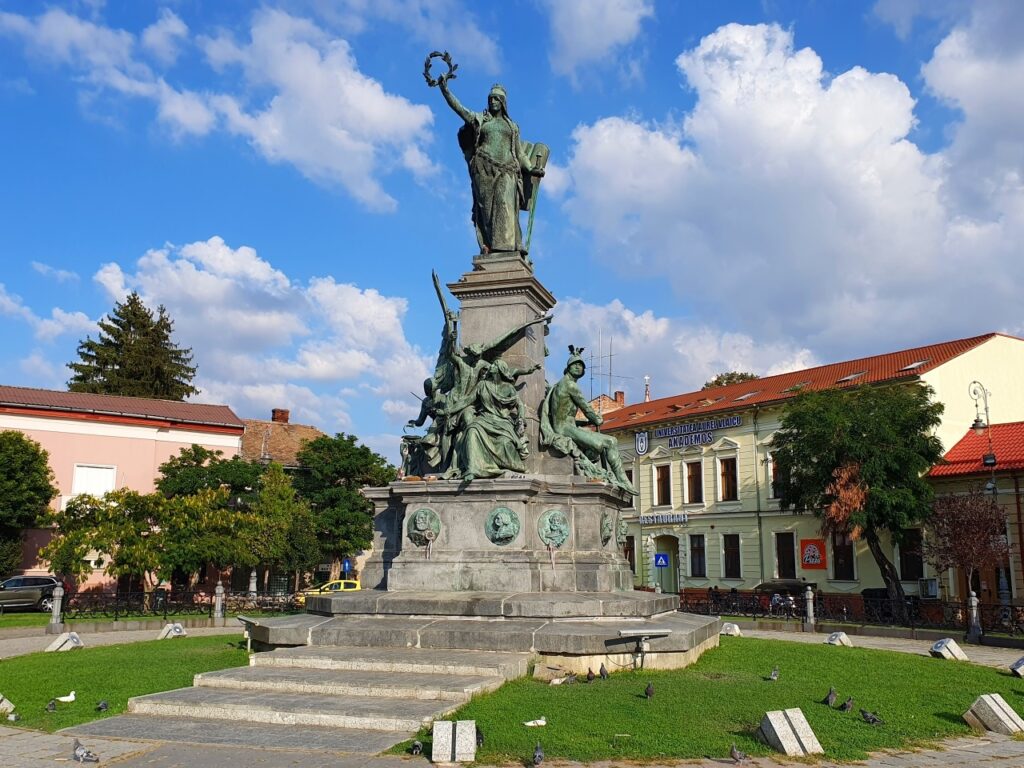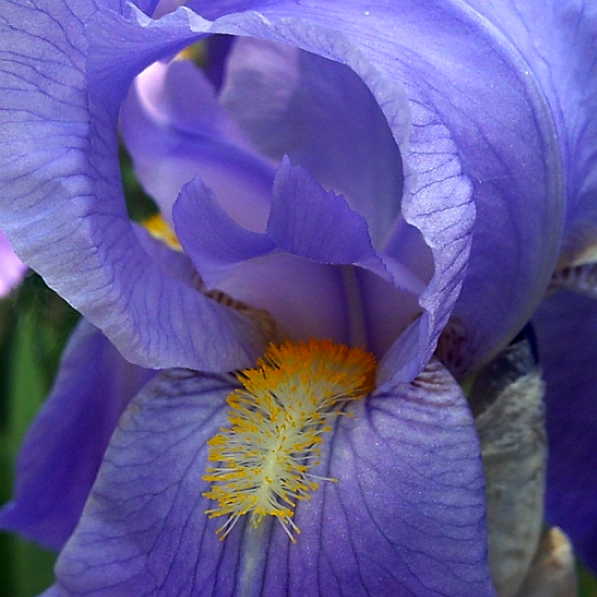In this article I will resume the voyage through central Arad, continuing the articles about the north, east and south. As done previously, I will show you the city as it is, although a decent amount of work already went into improving the photos…

This is the Water Tower, built in 1896 to supply the town with drinking water. It is partially covered by ivy. On a closer look however, you might notice something…

In their great wisdom, the authorities gave the green light for mobile phone companies to put GSM antennas on the historic tower… as if no other tall building was available. I find this particularly disrespectful… but who am I to judge!?!

This is the Triumphal Arch in the Reconciliation Park. It’s a Romanian monument that is facing the Hungarian Statue of Liberty in the same park. There is a very intense debate linked to the 2 monuments, as there is a very long hateful dispute between the Hungarians (who conquered and ruled Transylvania for almost 800 years) and the Romanians (who have always been the uneducated, poor and exploited majority, revengeful as one might imagine).

The Statue of Liberty, inaugurated in 1890. The statue was moved several times in the city and vandalized as recently as 2015. The subject is too contentious, so I will stop here.

The Nativity of St. John the Baptist Romanian Orthodox Cathedral, built in 1862, in the late Baroque, Zopf style. It lies in the Big Square or the Cathedral Square. I will let you see however the entire picture…
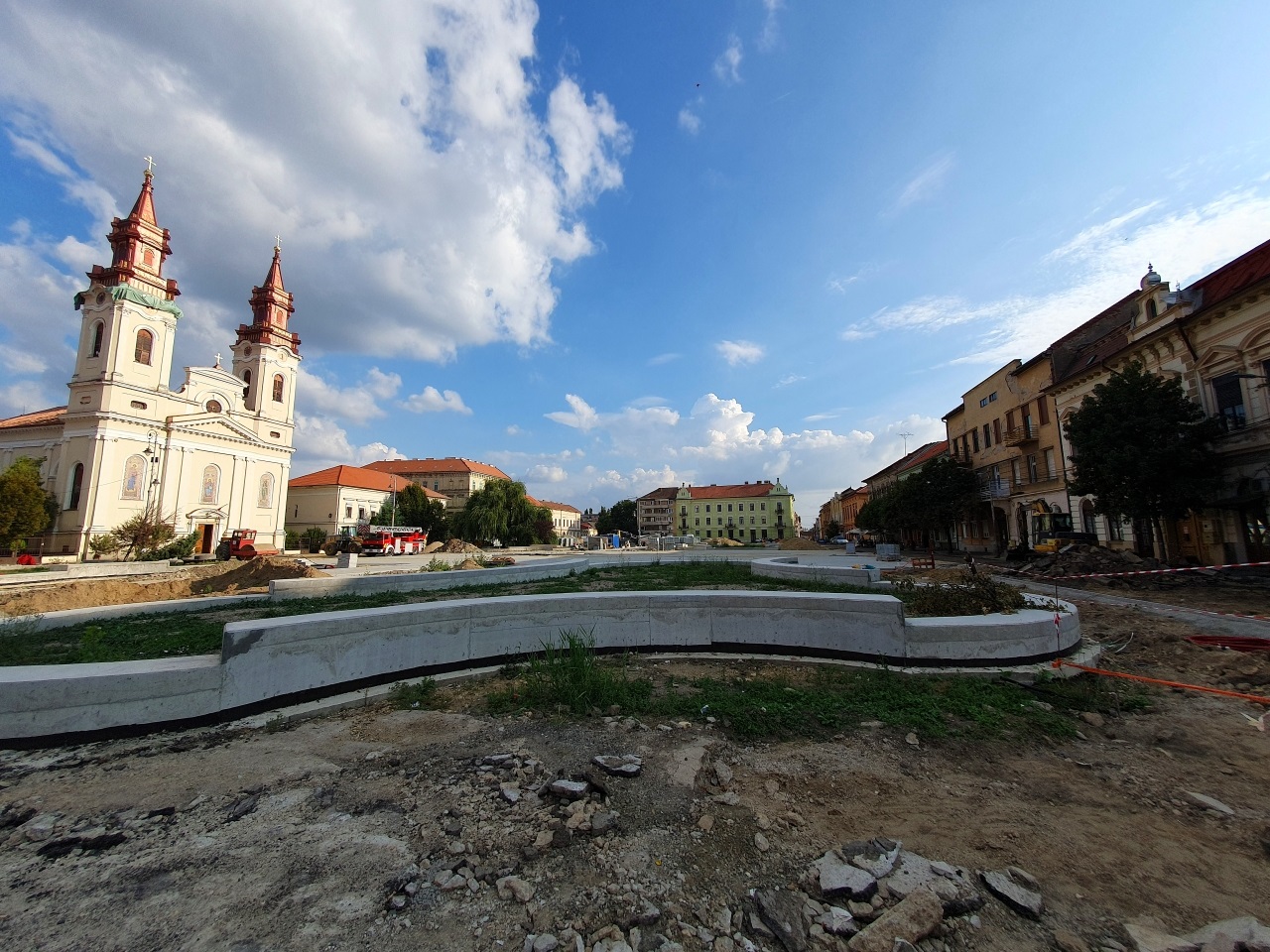
Yep, it’s broken as hell… The square looked as if being the subject of a bombardment…
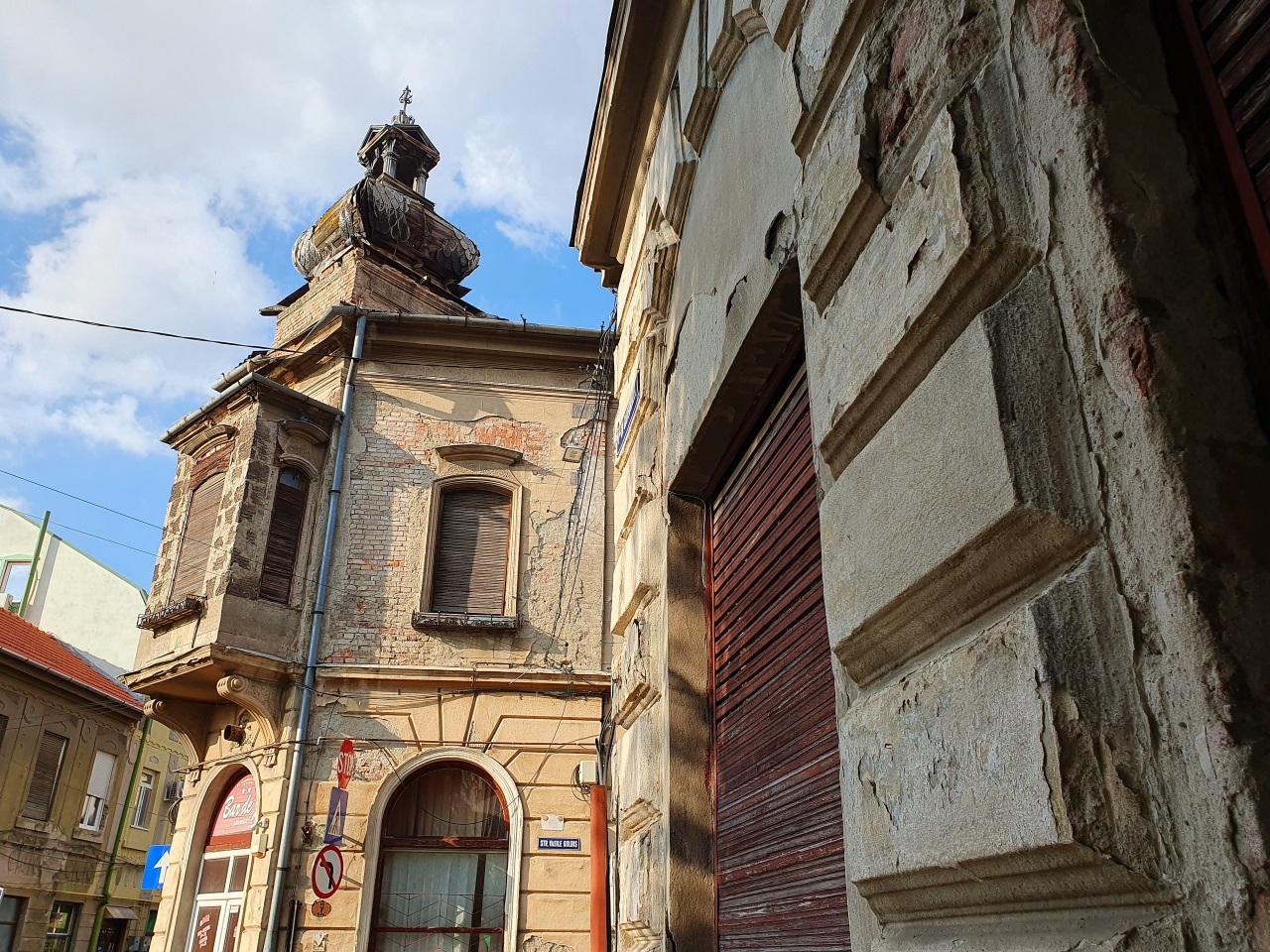
The buildings from the square are not better…

The Reformed or Calvinist Church, built in 1847.

The Greek-Catholic parish, one of the few buildings looking decently.
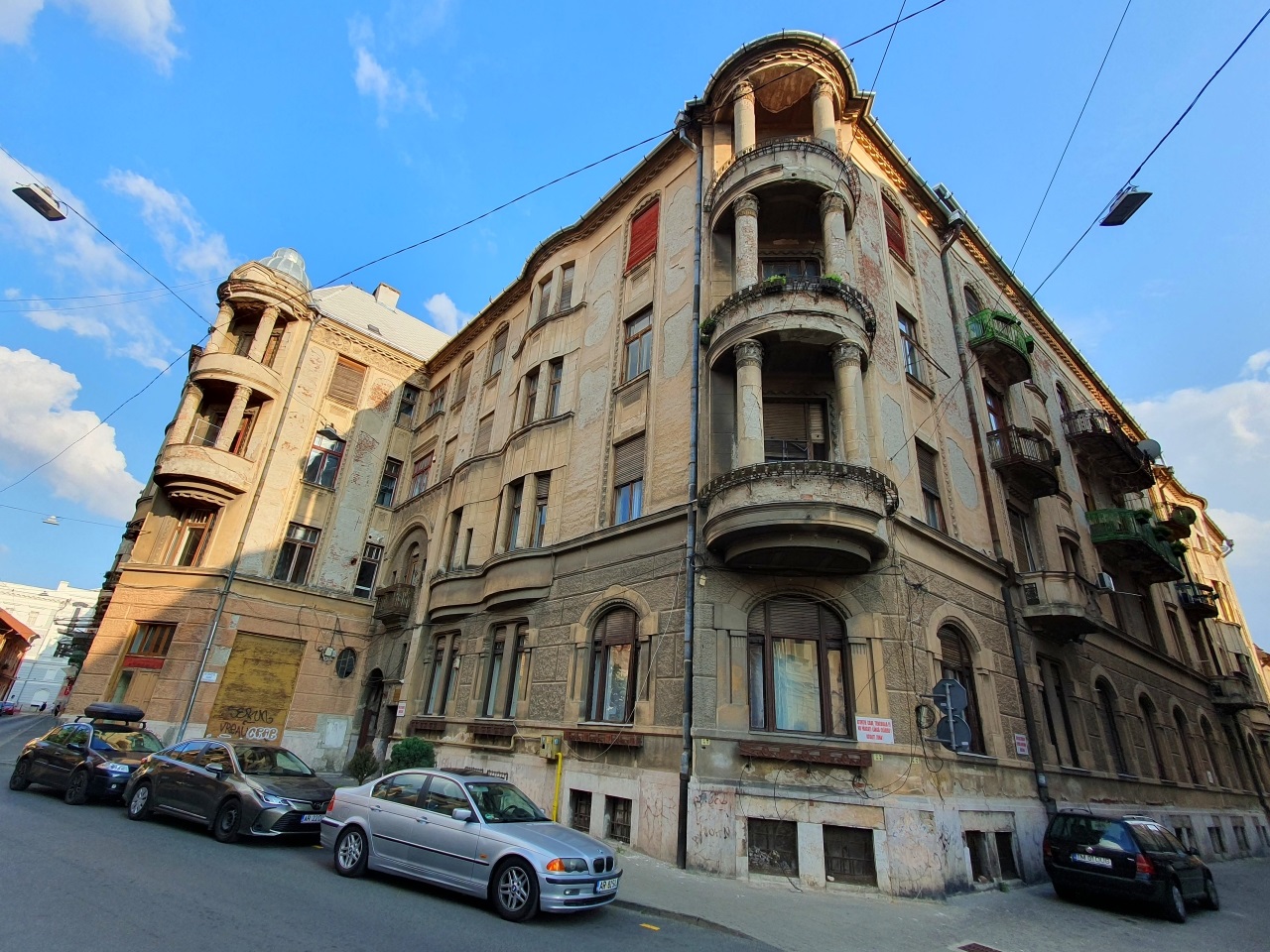
Here are 2 buildings joined together. The one to the left is Bohus Palace, built in 1913, in the Art Nouveau style. It housed the first cinema in the town, the Apollo. The other to the right is more interesting.

Nothing significant until we move closer and read the plates…

The top plate reads, in Romanian, “Colegiul Medicilor din Judetul Arad” (the Medical College of Arad County), the one to the left says that the door closes between 23h and 6h (during the night), but the one to the right says “Atentie cade tencuiala! Ocoliti zona!” (Attention, the plaster falls! Avoid (go around) the area!). Now, I have a problem: I am a doctor and I might want to go to the College for obvious professional reasons, such as paying my annual fee or getting papers. How am I supposed to go inside the College? Fly? Teleport? I guess that I need to assume the risk of plaster falling on my head – a risk I was clearly warned about – as there is no other option if I need to keep working as a doctor. No sign of protection above the entrance – such as a tunnel, for instance. I mean, solutions could be found, but… what the heck!

The same building mirroring a modern building, proof that things can be done… if one wants to… But let’s have a look at the same building, the side facing the new building.

The small plate reads the same thing: Attention, the plaster falls! Avoid the area! The big one reads: “Apartament de vanzare” (Flat/Apartment for sale). Now, how could you visit the apartment (with the intent of buying it) if you are clearly warned that things might fall on you? And who would like to buy such an apartment anyway?!?

The Vasile Goldiș Memorial Museum. Vasile Goldiș Western University of Arad, a well-known private university, is named after this politician. There is garbage in front of it…
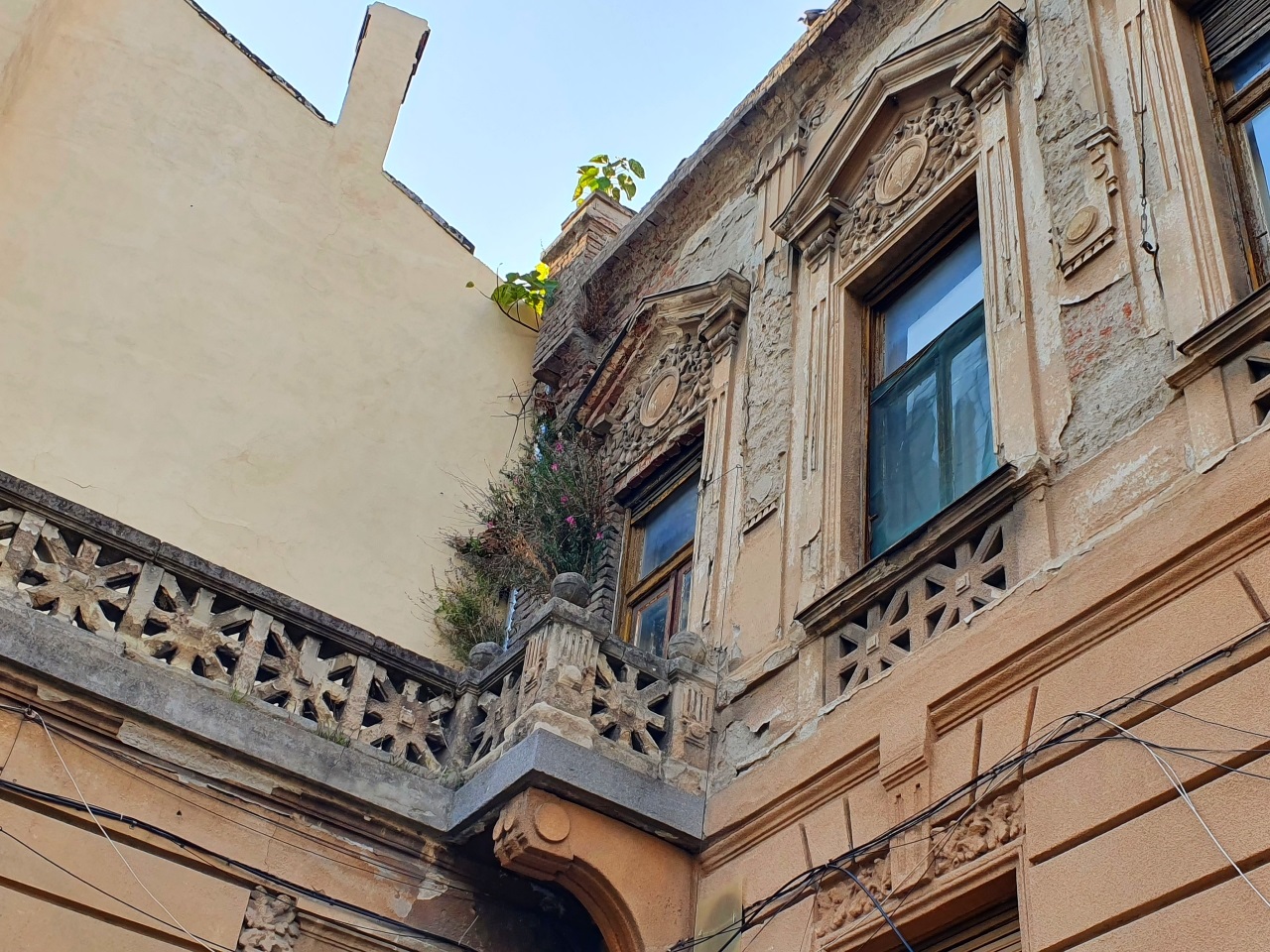
A… detail… of the left corner of the building. That’s grass and trees growing on the museum…
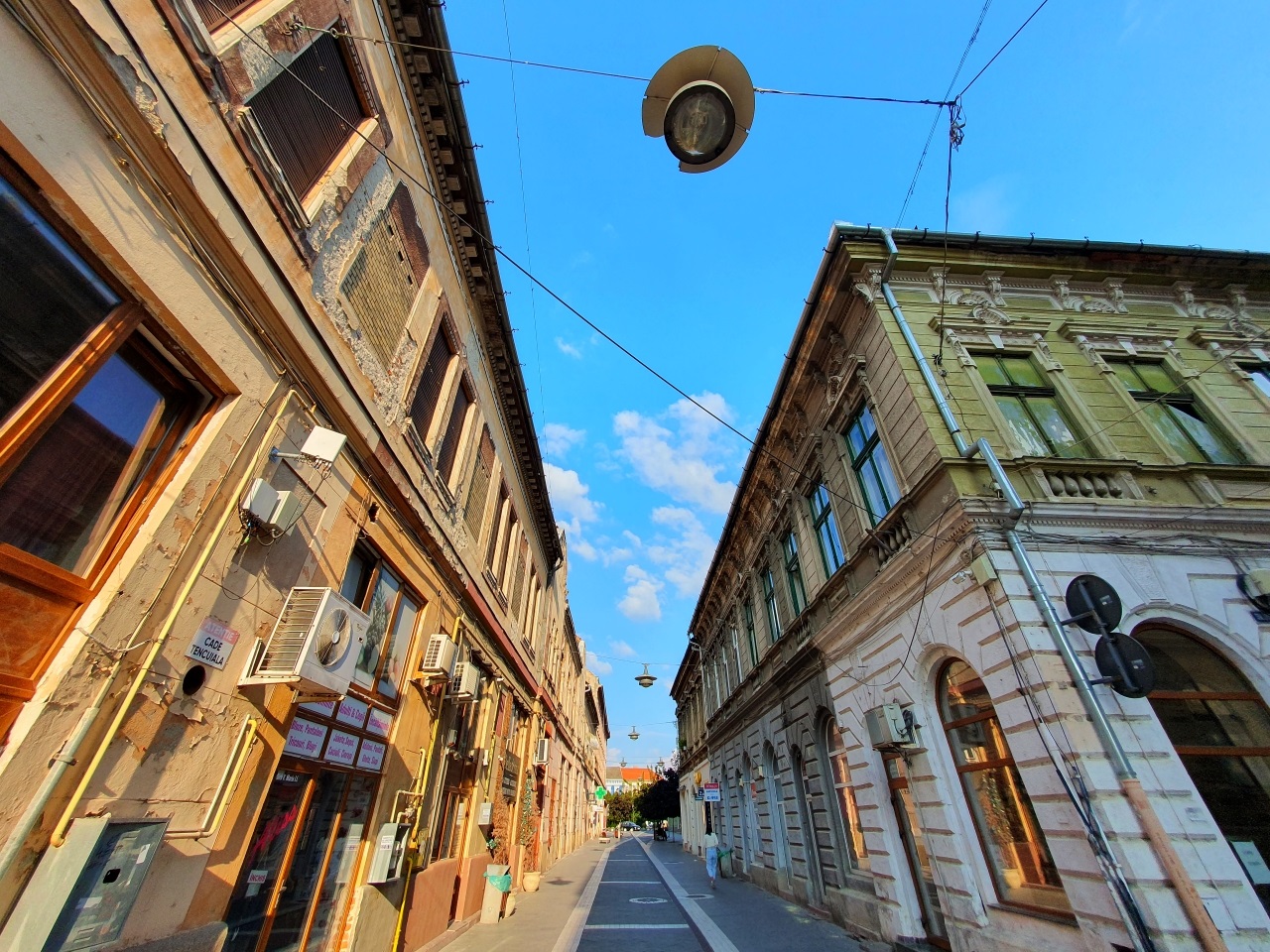
One of the pedestrians-only streets of Arad. Buildings in ruin, a broken lamp, you get accustomed after some time, you don’t see it as abnormal… It’s just part of the daily life. But for a visitor like me, it’s obvious things aren’t looked after…
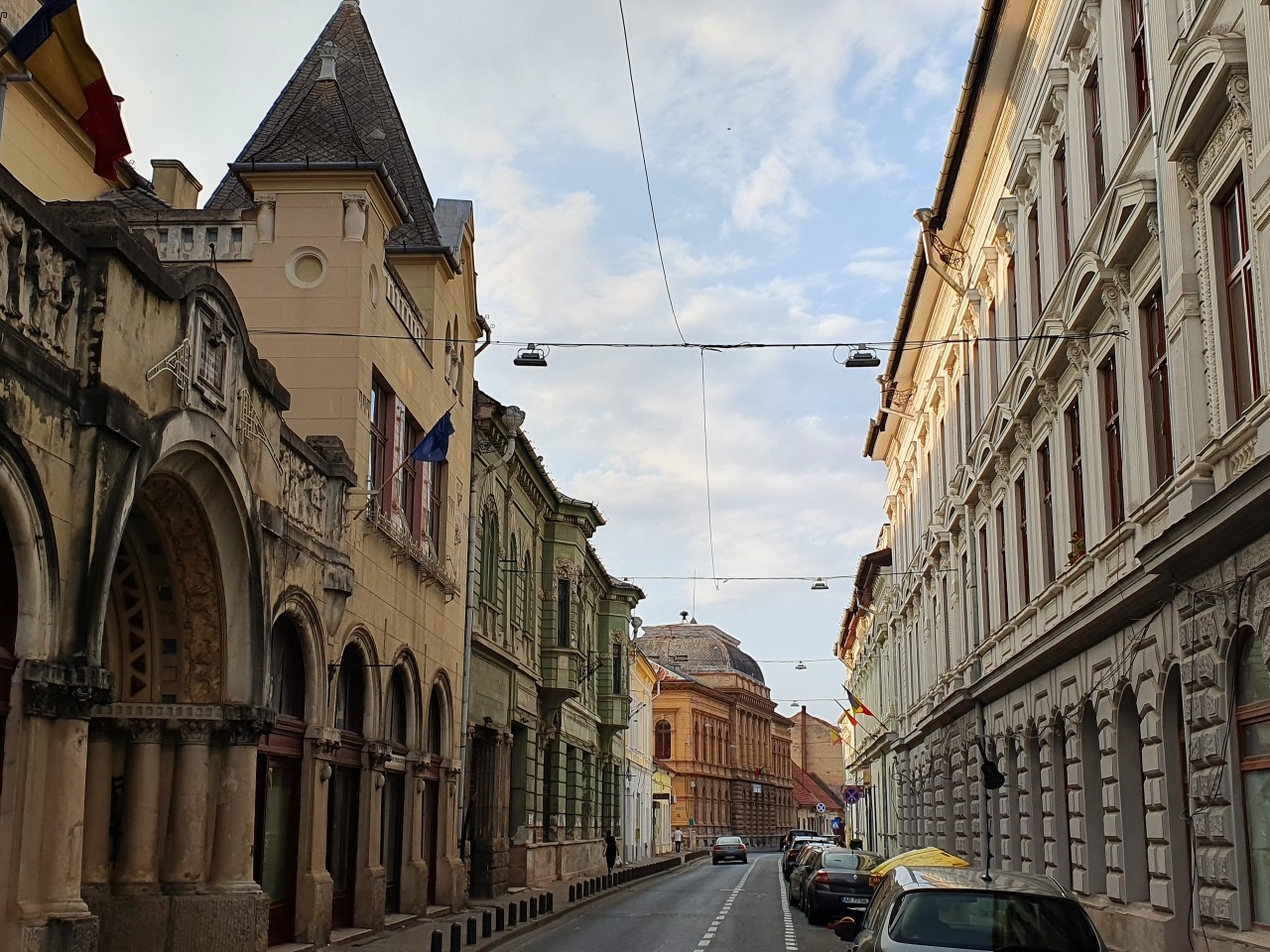
The “Normal School for girls in Arad” (Școala normală de fete din Arad), built in 1909 in the Secession style (to the left) and the Technological College of Food Industry (in the center-background).
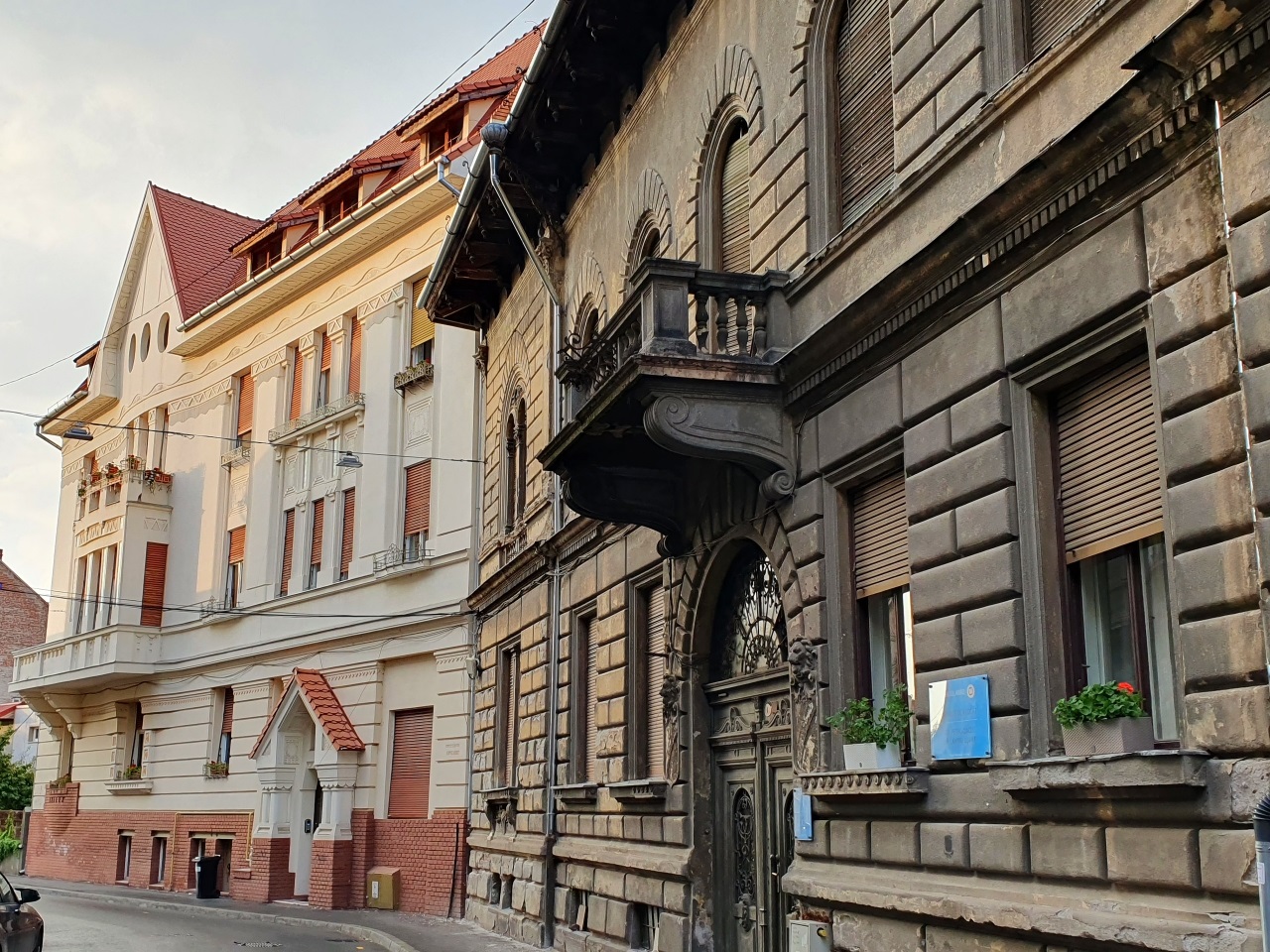
Now we move to another street, going north, with this villa built in the Art Nouveau style.

Just around the corner is this beautiful house with tables in front of it, belonging to a restaurant or some sort of cake shop. However, surprisingly, in the middle of all those tables is a statue.

It’s the bust of Endrődi Salacz Gyula, mayor of Arad between 1875 and 1901. Now, I find it disrespectful to put tables around such a monument… I mean, you eat next to the statue. It’s not OK…
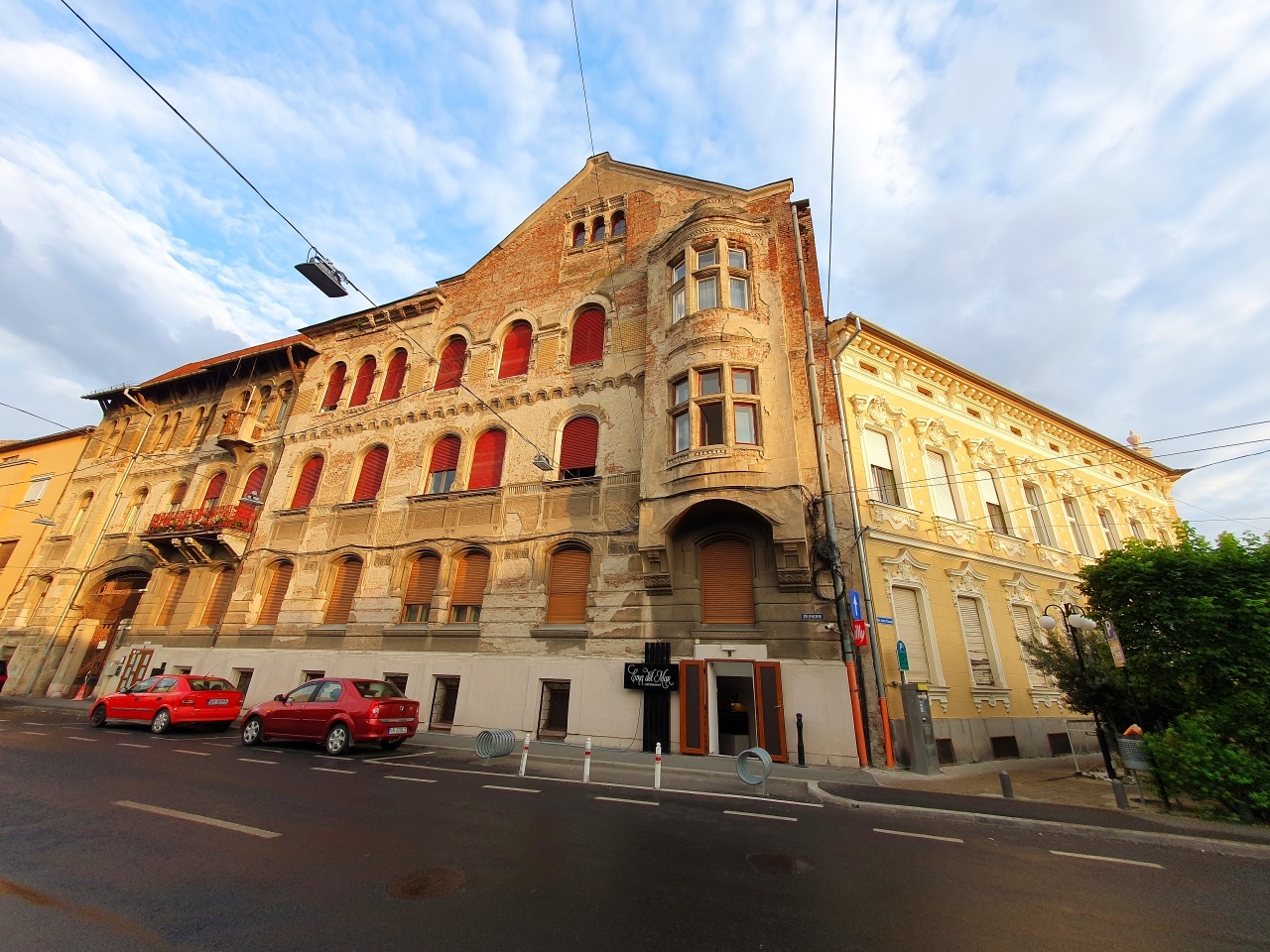
Continuing around the corner, we can see the Kohn Palace, built in 1905.
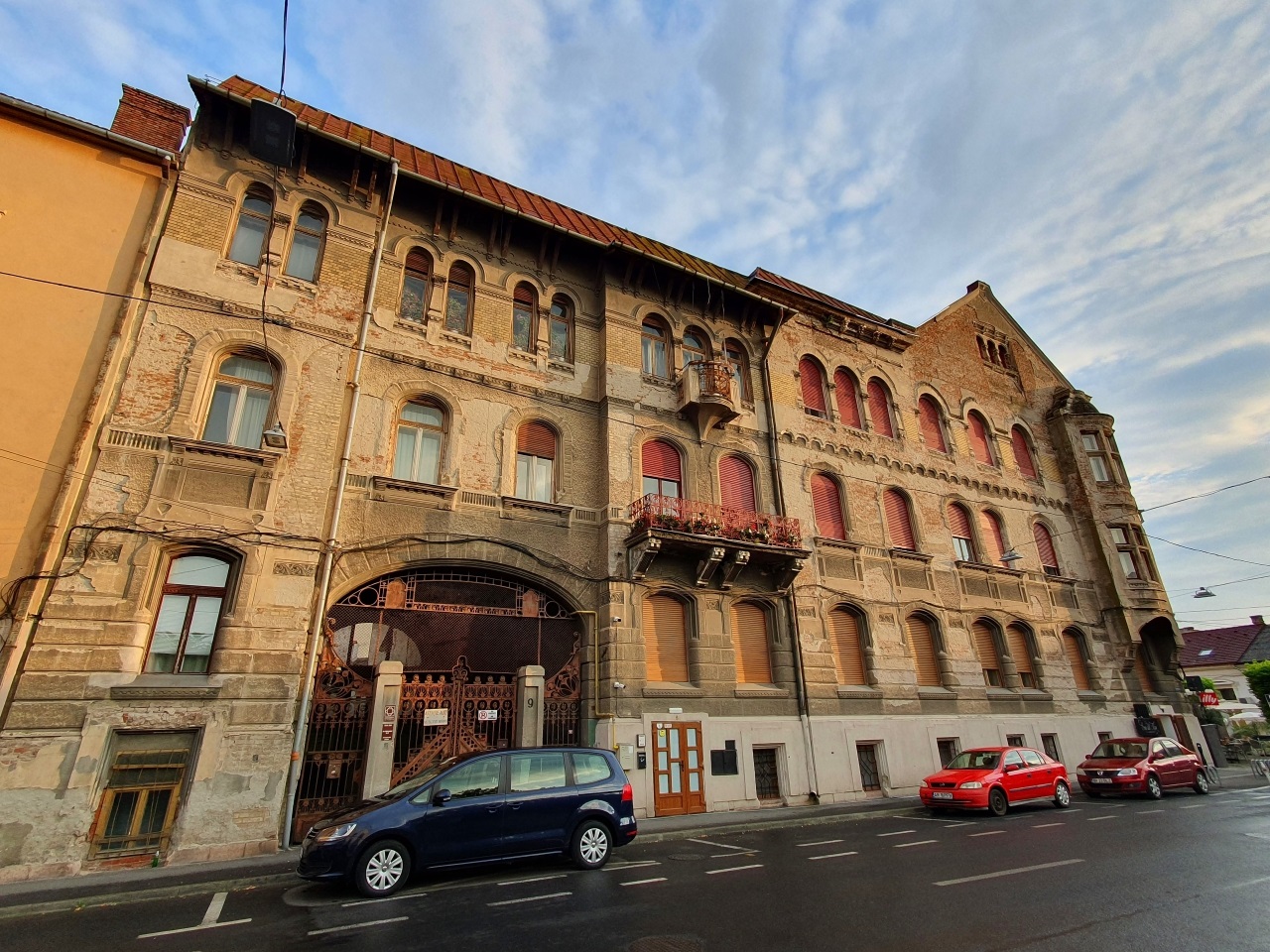
I think you got used to these buildings already, so you no longer notice their ruined state. However, let’s zoom in a bit on the windows!
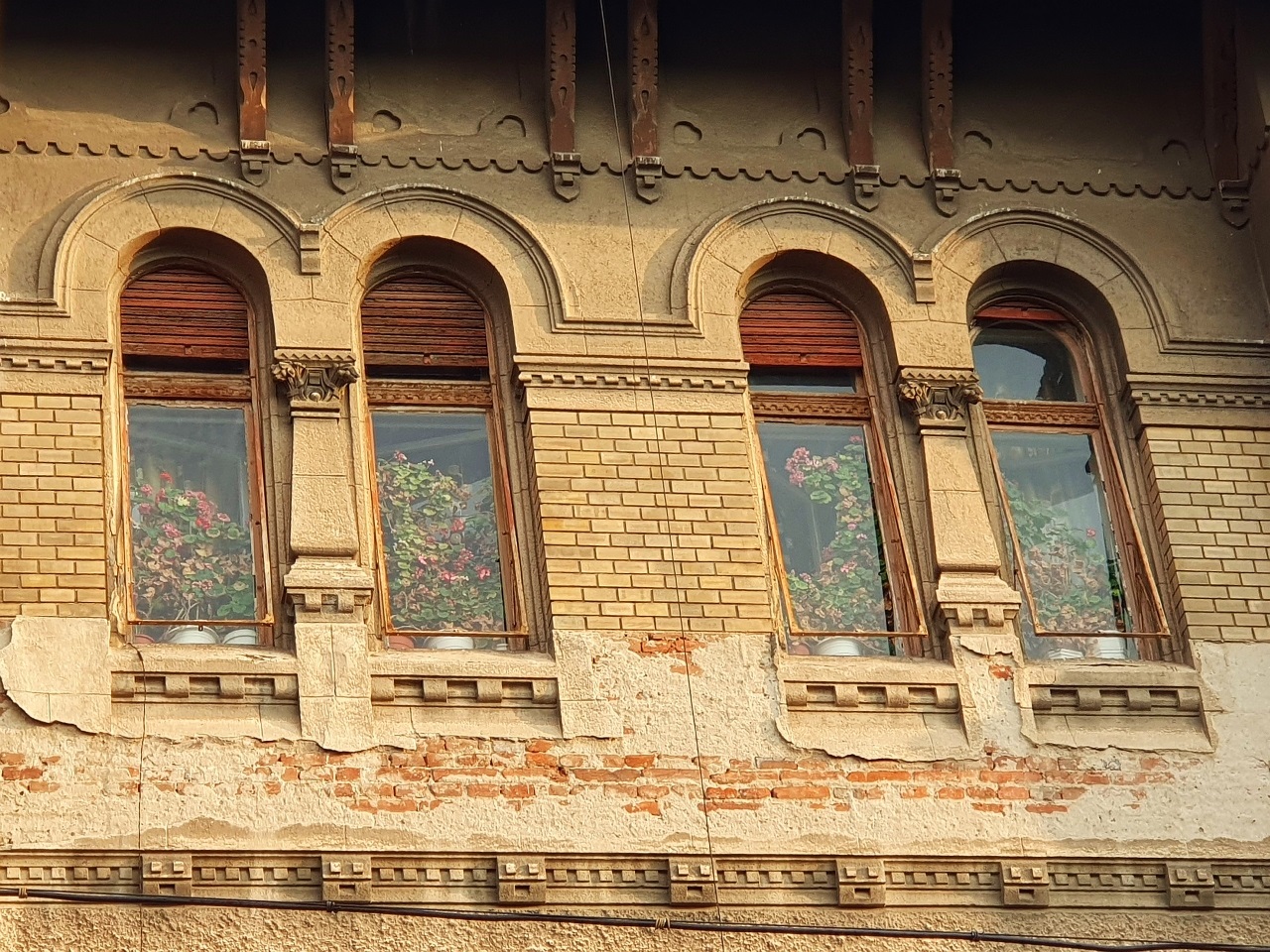
Those are Geranium (Pelargonium) flowers that have grown like a forest in those windows. I imagine an old lady forgotten there by time, watering those flowers that haven’t been trimmed since time immemorial. So, there is life there, at the last floor… The image gives me chills down my spine…
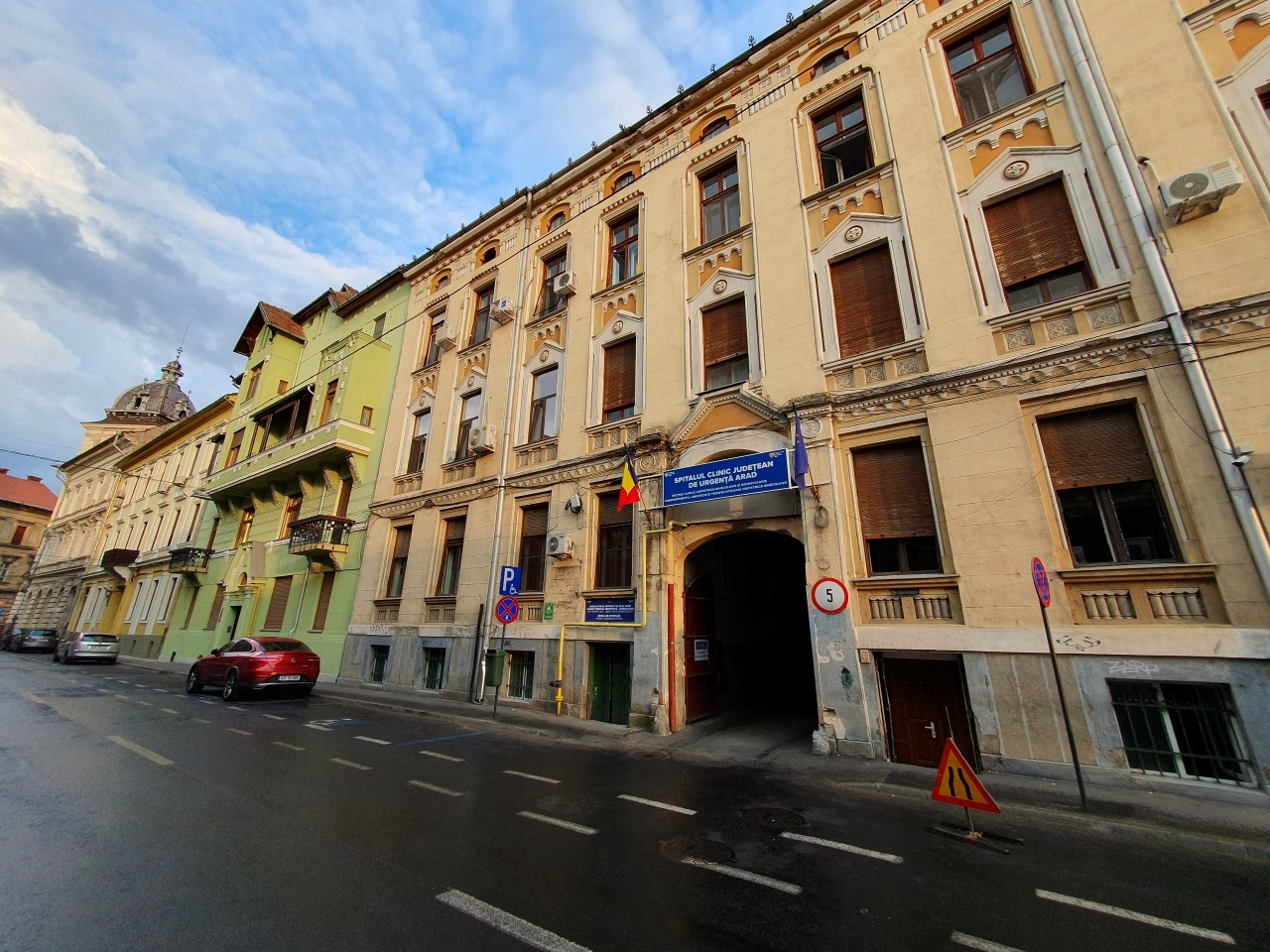
This is the entrance to the Obstetrics & Gynecology Clinic of the city (where children are born in Arad, a public hospital). Here I had a fight with the guardian who didn’t want to let me in, despite the fact that the hospital is in the public space and I have the undeniable right of passage. I asked him why he wouldn’t allow me to visit, as the hospital is the former Fischer Eliz Palace and I wanted to take a photo. He couldn’t give me an answer so I escalated the situation by informing him that I am a doctor and I can show him my professional card and seal (in Romania the medical documents are ink initialed or sealed, then signed, and the seal is the only form of proof that one is a doctor, since a simple signature isn’t enough, being potentially counterfeit). This has suddenly changed the situation, so I was permitted access. The photo below is the only one I could take of the hospital, which was 20 meters from the entrance.

This ivy-covered palace is the hospital. While looking at the ruin on the outside, one can imagine in what conditions a new life begins inside, as I cannot imagine the interior being significantly better. When the guardian saw me taking this photo, another quarrel erupted. No photos! It is important to say here that Romanians, similar to the French who I saw did the same thing, tend to cover what goes wrong and “save the face”. The guardian was fully aware that everything is a ruin, but he was afraid that I might be a reporter or someone who might put the photo online, hence showing that nobody cares about the condition of that hospital. His fears were totally justified, as you can see the image above. But he didn’t attempt to stop me when I wanted to leave the place, because he knew that I have the right to pass and photograph, since I’m on the public domain. Funny fact is that the hospital can also be photographed from the street and you don’t have to get into its garden, so the entire struggle was in vain. But it left me a bitter taste of communist vibes…

The Szántay Palace, built in 1905, in the Art Nouveau style.

The buildings begin to look better. This is next to the Neuman house, former residence of Nicolae Ceaușescu, which I failed to properly photograph (it was actually the one appearing in the extreme left and not the one in the center).

Szántay Palace again, with its caryatides…
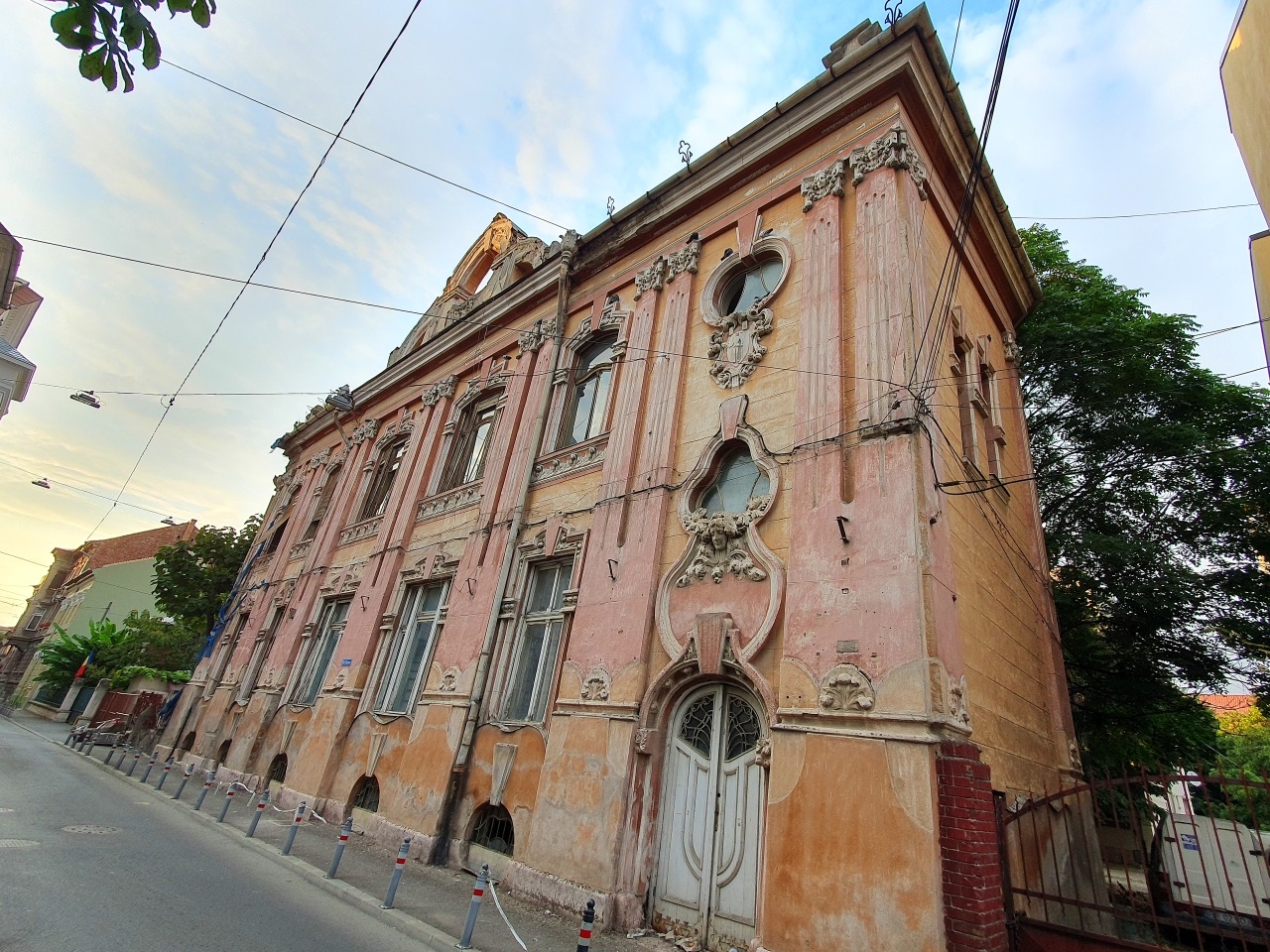
The Palace of Ispán Urbán István of Arad, built in the Art Nouveau style.

Let’s admire the degree of ruin of this beautiful palace! That is a brick fence that has fallen on the sidewalk…

Trees growing out of the walls…
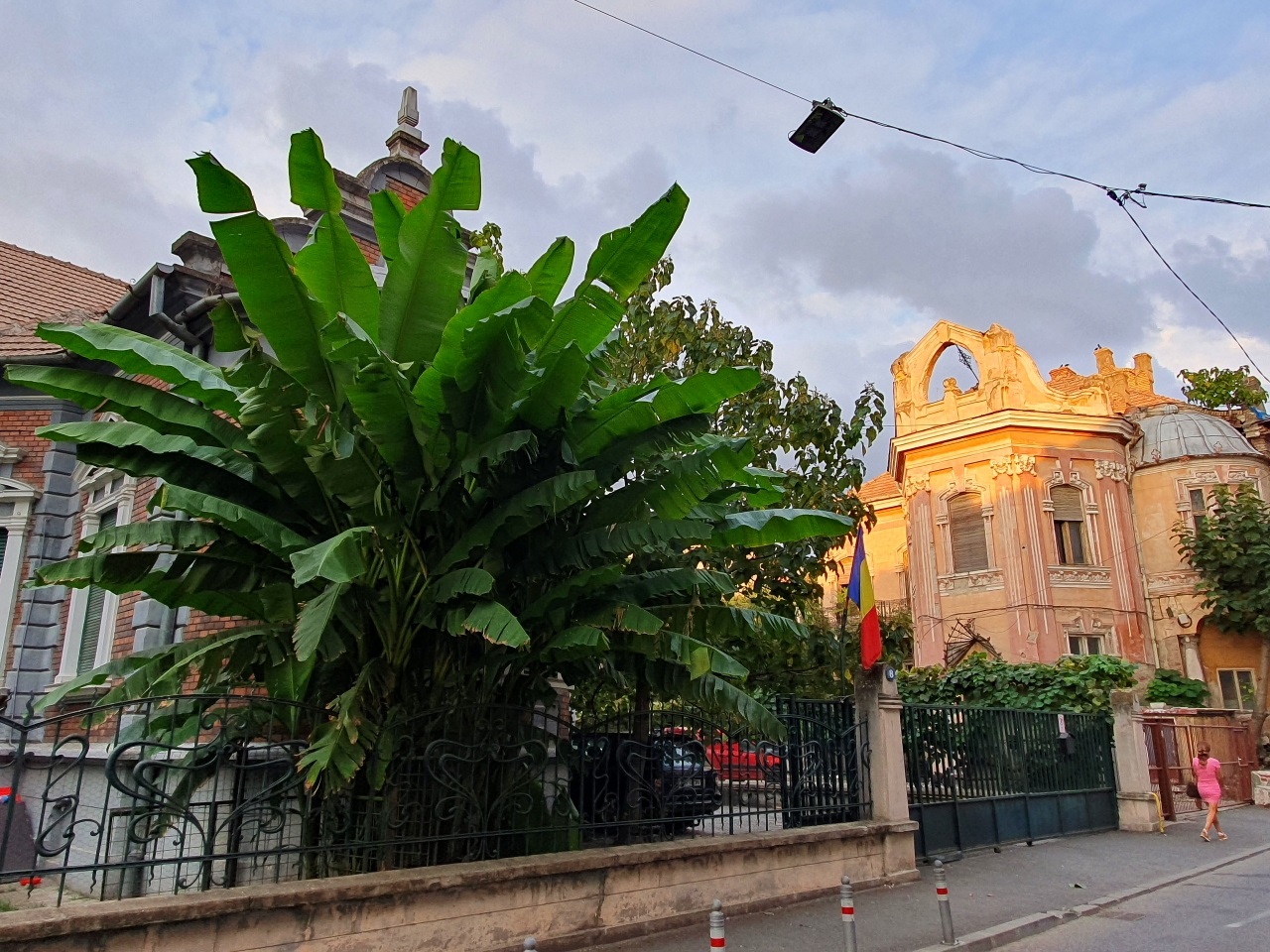
A banana tree that has not yet taken root up there, but there is still hope…
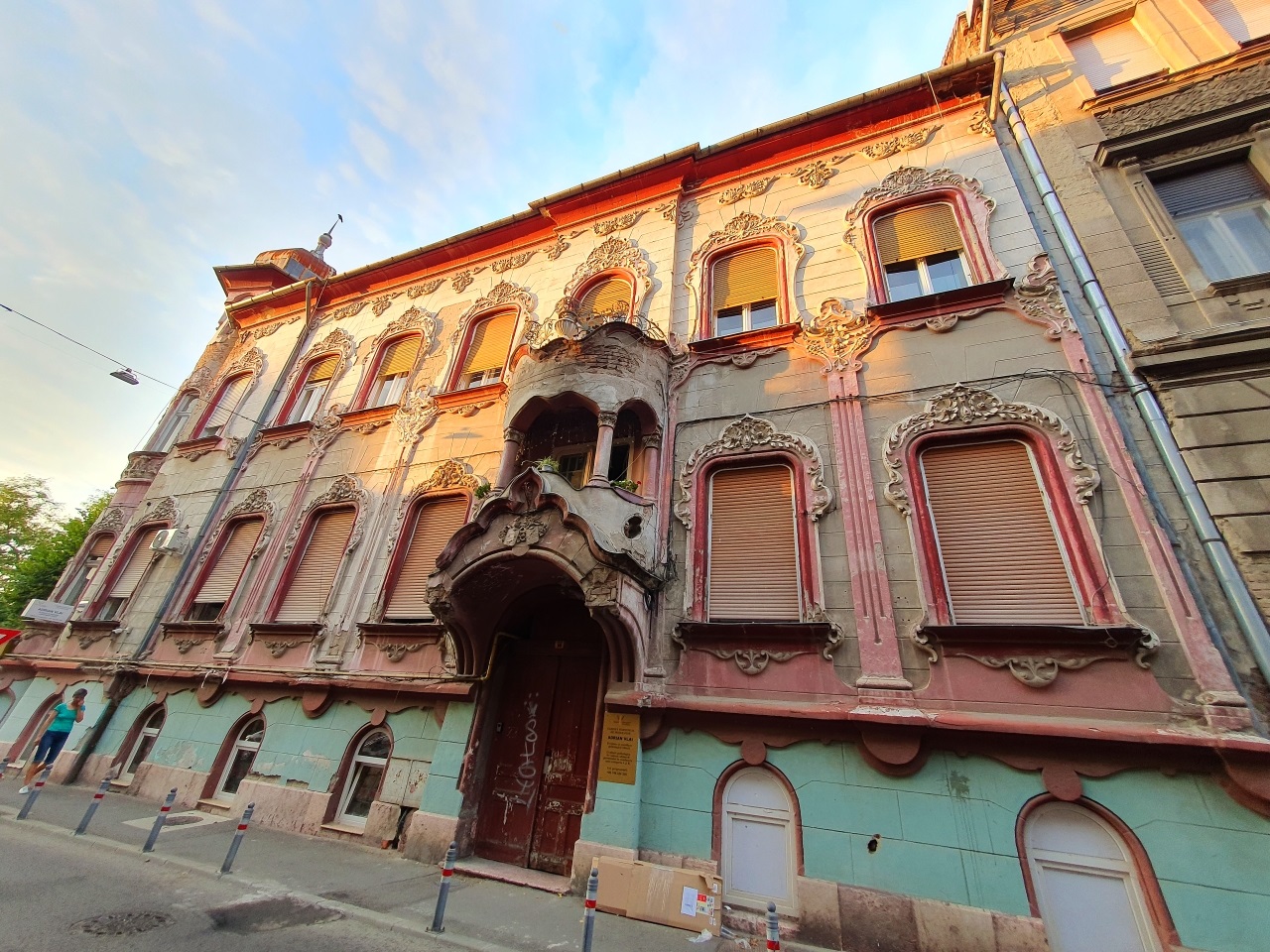
The House of Mrs. Jakabffy, built in 1906.

The details of the Jakabffy Palace.

The Arad County Library. Also the Art Museum of Arad.
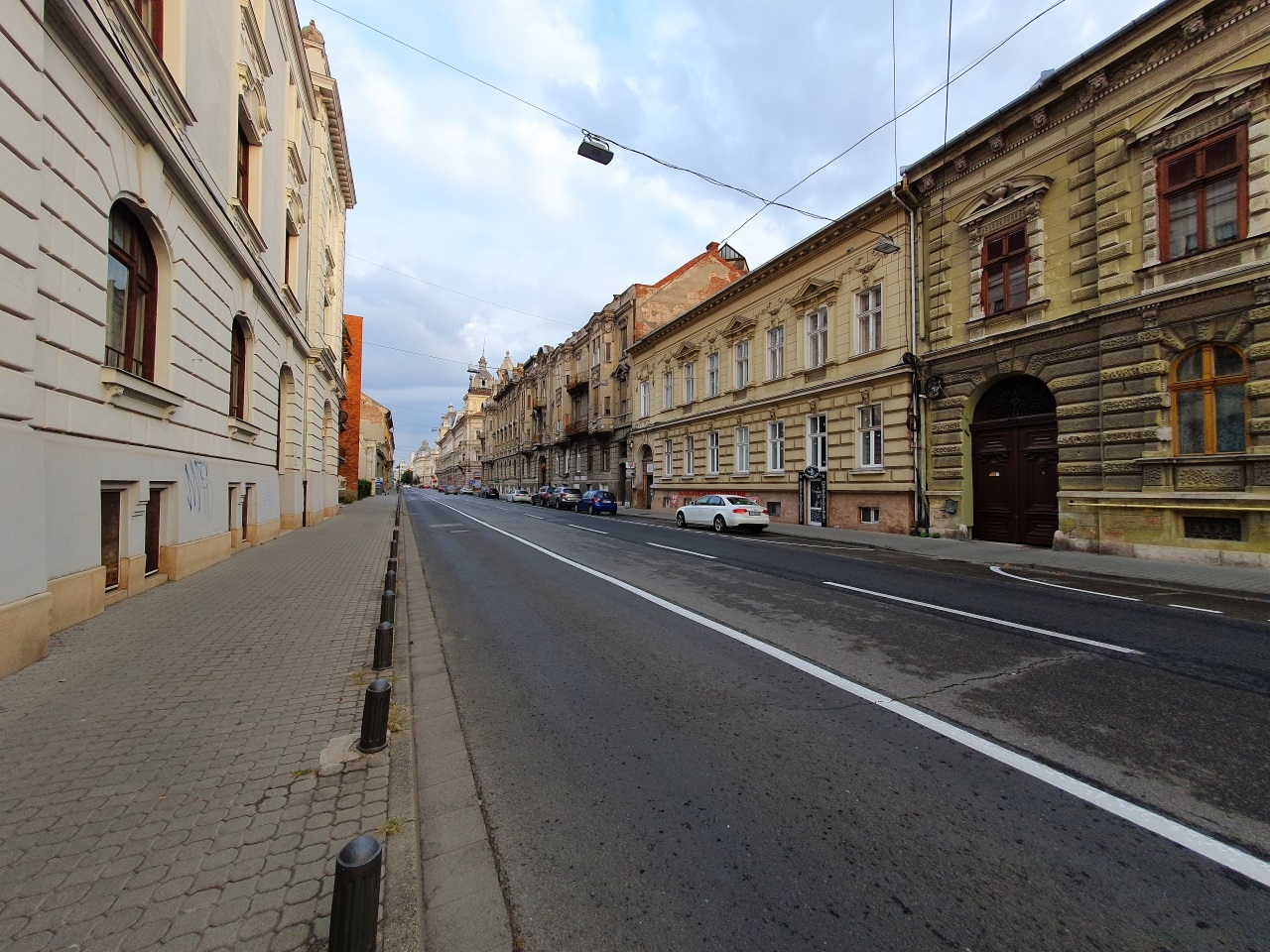
A view of Horia Street, which resembles to many of the streets in Vienna. This makes me say that Arad is probably the most beautiful city in Transylvania, as it has large buildings which are typically found in capitals.
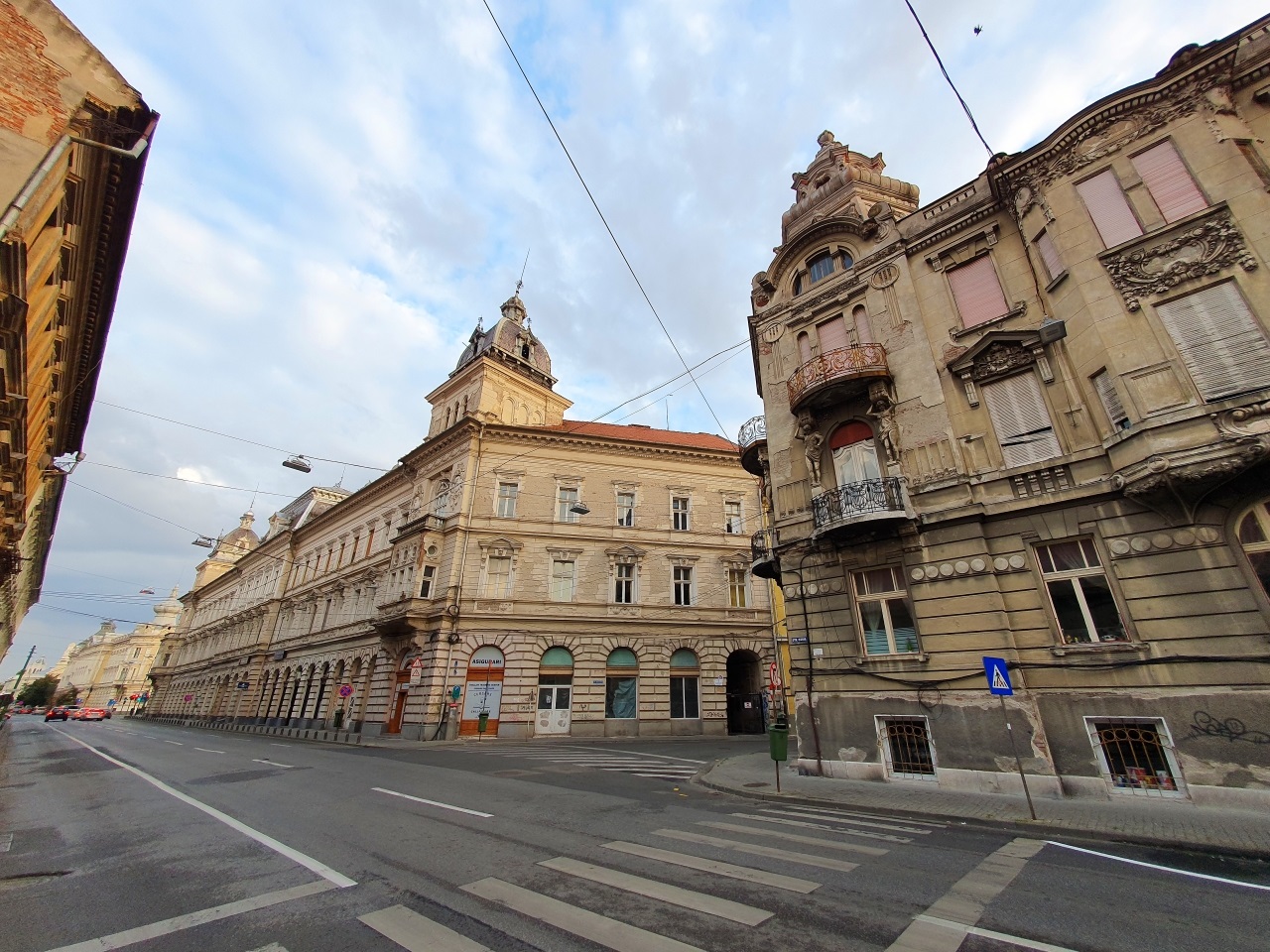
The same street, moving towards the town hall. And concluding our journey in the western part of Arad.
Arad – West
